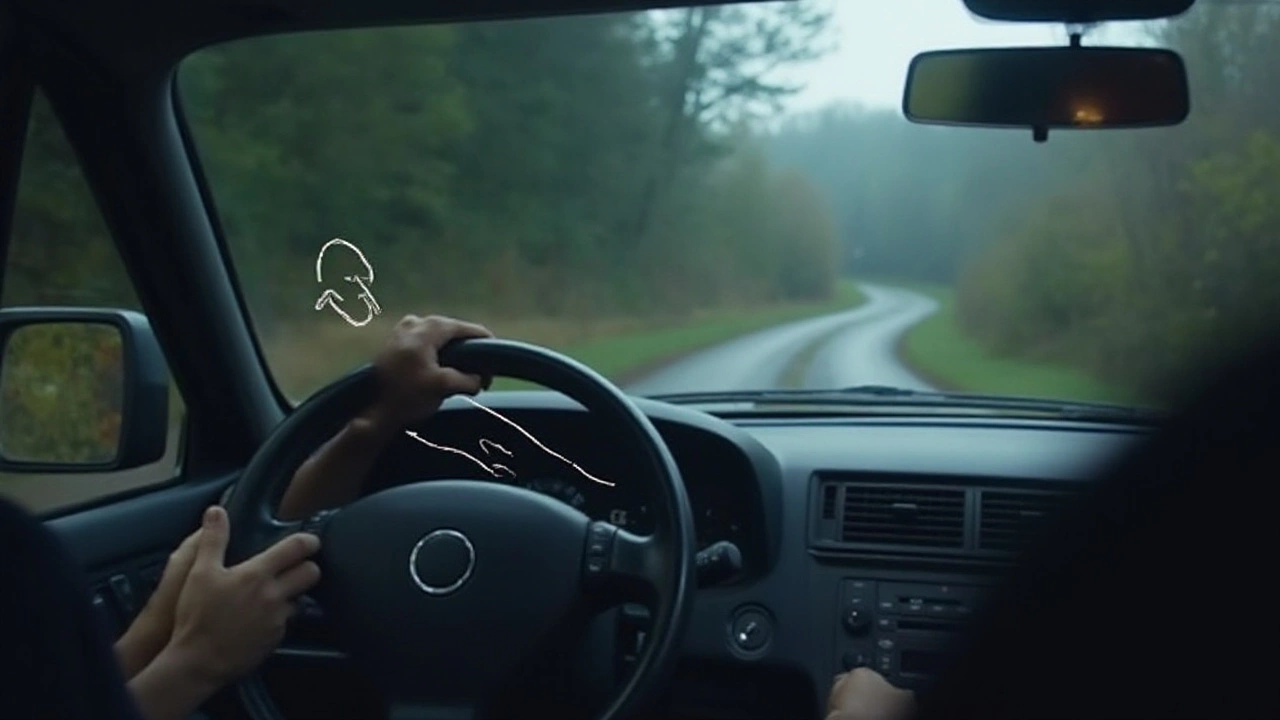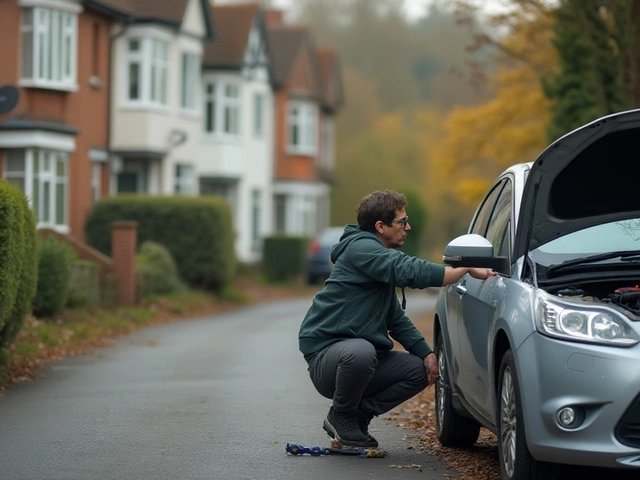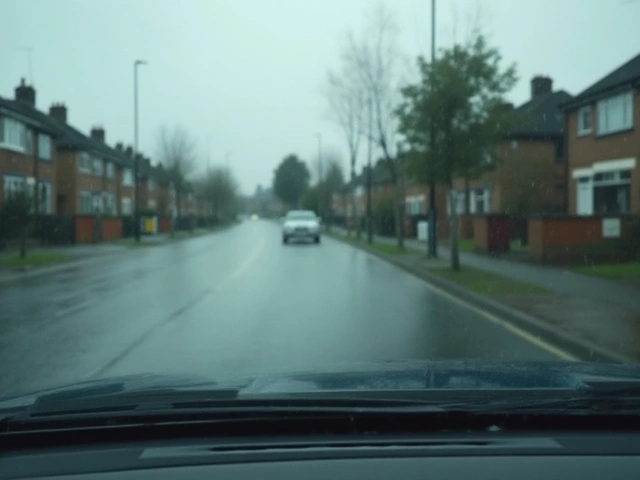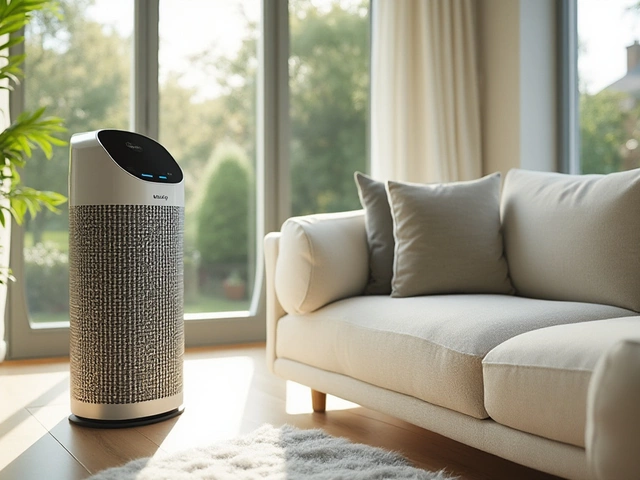Your vehicle's brake system is quite literally a lifesaver, and the humble brake pads are at the forefront of this vital mechanism. While they may not appear to be significant at a glance, these components undergo incredible stress and wear each time you bring your car to a stop. Knowing when your brake pads are worn down isn't just about avoiding annoying noises—it's about ensuring your safety on the road.
Determining the condition of brake pads can sometimes feel like deciphering a code, but it's not as complex as it seems. From distinctive sounds to specific feel and performance changes, many indicators can help you assess brake pad wear before it becomes a concern. Regular checking and timely replacement of brake pads can prevent more severe damage to your braking system and keep you safe.
- Signs Your Brake Pads Might Be Worn
- Understanding the Importance of Brake Pads
- Noisy Brakes: What Sounds to Listen For
- Visual Inspection Techniques
- Tips on Extending Brake Pad Life
- When to Seek Professional Help
Signs Your Brake Pads Might Be Worn
Recognizing when your brake pads are on their last leg is crucial to safe driving. This isn't just about peace of mind; it's about your life's most elementary safety protocol. It's like having your own personal assistant offering vital hints that it’s time for a check-up, disguised in the form of various signs your vehicle may present. Let’s delve into these signals with a thorough and in-depth approach to ensure you're well-prepared to catch them early.
The first, and often most obvious, indication comes in the form of sound. Imagine the unnerving feeling of hearing a high-pitched squealing every time you apply the brakes. It's a message from your car that cannot be ignored. This squeal occurs because manufacturers incorporate small metal tabs, or "wear indicators," into the pads. They’re engineered to produce that sound when they're worn down past the safe point. You might encounter variations in tone, but the underlying message remains the same: it's time to replace those pads. This audible warning can often be noticed when windows are rolled down or when driving next to barriers that bounce back the sound.
The well-known car care organization, Automotive Service Association, states, "Squealing brakes are a sign of trouble. Ignoring them could mean putting yourself and your passengers at risk."
Aside from audible cues, vibrations felt through the brake pedal or steering wheel are another significant symptom. This shouldn't be confused with normal vibrations experienced on rough terrain, but rather a consistent pulsing action that points to uneven brake pad wear or an unbalanced rotor. When you feel these tremors, you're essentially sensing the irregular contact between the pad and the rotor surface. Left unchecked, these vibrations can lead to further wear on other braking components, compounding both the problem and repair cost.
You might be surprised to learn how much the behavior of your car can tell you. A car pulling to one side during braking can indicate a worn-out brake pad or issues with the hydraulic system delivering uneven pressure. Over time, the pad's material wears down, becoming less effective at evenly applying force across the rotor disk. This pulling not only hampers your ability to control the car but may also suggest that one set of pads is in worse shape than the other. In this scenario, it's usually best to seek a professional assessment.
Additionally, a frequent stopover to your mechanic might highlight a clear reduction in braking performance. If you experience a noticeable increase in your vehicle's stopping distance, it's likely due to diminished thickness in the brake pad material. Essentially, worn brake pads translate to fewer friction materials available to grip the rotor and slow the vehicle effectively. Considering this is often accompanied by a soft or low brake pedal, understanding the gravity of this sign is vital to ensuring timely intervention and maintenance.
Of course, no car inspection is complete without a visual check. When examining the brake pads, a minimum thickness of 1/4 inch usually implies it's time for a replacement. The naked eye can provide insights, but nothing beats a thorough examination using a braking gauge. Often, there might be visible scoring or grooves on the rotor when pads are significantly worn, an advanced state that typically requires an entire brake system revamp rather than just pad replacement. Regular checks under the hood or at a professional service can help mitigate these extensive repairs.
Finally, embracing tech can also prove beneficial. Some modern cars incorporate a warning light on the dashboard specifically for brake issues. While this technology varies by model and manufacturer, it's a valuable prompt that speaks to the advanced state of contemporary vehicle diagnostics. Relying on these lights while staying informed about the earlier natural cues can provide a combined approach to maintaining optimal brake health.
Understanding the Importance of Brake Pads
Brake pads, though small and often overlooked, are critical components in the vast machinery of your vehicle's braking system. These subtle sheets of friction material press against the brake rotors to slow down and stop the car whenever you apply the brakes. The friction they generate absorbs energy but creates massive heat, which these pads must endure and disperse effectively. In this dynamic, brake pads act as unsung heroes, providing the necessary force and reliability to ensure that your vehicle maintains optimal stopping power.
As a driver, you should appreciate that the wear and tear of brake pads is inevitable. Every time you press the brake pedal, tiny fragments of the pads are ground away. Over time, this cumulative process can lead to significant thinning and reduced effectiveness. Neglecting worn brake pads might not only risk sacrificing your car's performance but also your safety. Worn-out pads can lead to increased stopping distances and in severe instances, a complete failure of the brake system. Knowing this, it's vital to grasp when and why you should replace these pads at the appropriate moment.
Preventing Costly Repairs
The importance of maintaining healthy brake pads isn't limited to safety alone—it impacts your financial well-being too. Replacing worn pads promptly ensures that the metal components of your braking system, like rotors and calipers, remain intact. When brake pads are used past their optimal life, you risk causing severe damage to these parts, necessitating expensive repairs or replacements. Engaging in regular checks and timely replacements of your brake pads can lead to substantial savings over time.
"Regular maintenance is the backbone of vehicle longevity," suggests automotive expert and author of "Brake Systems Demystified", Adrian Jacobs.
Drivers should adhere to the manufacturer's guidelines about when to inspect and change brake pads. Depending on varying factors like driving habits, road conditions, and the materials that make up the pads themselves, their lifespan can differ. For instance, pads constructed from ceramic, while quieter and less abrasive, typically last longer than those made from other materials. However, they might not be as efficient in dissipating heat. As technology continues to evolve, knowing the specifications and benefits of each brake pad type can provide more insight into making informed decisions.
Maintaining optimal brake pads directly influences your vehicle's overall safety, efficiency, and reliability. With the right knowledge and timely action, you not only promote the longevity of your automobile but also contribute to safer driving conditions for you and everyone sharing the road. Remember, the tiny pocket of material sticking to your car’s wheels might just be the one thing between you and an unexpected mishap on the tarmac. Treat them with the attention they deserve, and they'll repay you in safety and peace of mind.

Noisy Brakes: What Sounds to Listen For
When it comes to diagnosing potential issues with your brake system, the importance of your auditory senses cannot be overstated. Your car might be sending you signals in the form of high-pitched squeals, grinding noises, or a noticeable rumbling sound whenever you press the brake pedal. These noises are more than just an annoyance; they are a cry for help that should never be ignored. A high-pitched squeal is often one of the first signs that your brake pads might be nearing the end of their life. This noise can occur when the wear indicator, a small metal tab attached to most brake pads, becomes exposed and makes contact with the rotor. It's essentially an alarm bell designed into the system that should prompt a closer inspection.
Grinding sounds, on the other hand, could indicate a more severe issue: your brake pads may have worn down completely, and the metal backing is now making contact with the rotor. Not only does this mean that your worn brake pads need immediate attention, but it also suggests potential damage to the rotor, which can be more costly.
"If you hear a grinding noise when braking, it's critical to take your car to a professional mechanic immediately. The longer you wait, the more likely you'll need to replace more than just the brake pads," advises Sarah Thompson, an expert mechanic with over 20 years of experience.It's important to remember that not all brake noises indicate an immediate need for new brake pads. Sometimes, temporary noises might be caused by environmental factors like rain or humidity, causing a light rust build-up on the rotor surface.
To distinguish urgency, pay attention to how persistent these sounds are and under what conditions they occur. A consistent noise, particularly one that worsens over time, is definitely worth investigating further. Some drivers may also experience a clunking noise, suggesting potentially loose components in the brake system and necessitates a professional's eye. Other times, these auditory indicators might be complemented by a vibration in the brake pedal, which again ties back to the kind of wear the components are experiencing. Visualizing the braking force being transferred inefficiently due to worn-out materials can help in understanding the necessity to act swiftly.
When it comes to managing these noises, knowledge and timing are your best allies. By understanding what these sounds mean and responding appropriately, you’re not just working for the longevity of your vehicle; you’re ensuring your safety and everyone else's on the road. And remember, whenever you're in doubt, consulting a professional can often save both time and money in the long run. They can provide thorough diagnostics that are sometimes hard to achieve in a home garage setting, ensuring you have the best information to act on.
Visual Inspection Techniques
Visual inspection is one of the simplest yet most effective ways to determine if your brake pads are worn and in need of replacement. This process doesn't require any advanced tools or a professional's touch, but it does demand a careful eye and a bit of patience. Start by ensuring your vehicle is safely parked on a flat surface, and use a flashlight if necessary to get a clear view of the brake pads through the gaps in your wheel's spokes.
The first thing to look for is the thickness of the brake pads. In general, if the pad material is less than a quarter of an inch thick, it's time to consider replacing them. Most of today's brake pads come with a wear indicator—a small metal strip embedded in the pad. When the pad wears down to this strip, you will often hear a high-pitched squeal, cautioning you that it's time for a change. Remember, neglecting this warning can lead to metal-on-metal contact, which could seriously damage other brake components.
Another technique is to remove the wheel for a more thorough inspection. This allows you to examine the entire brake assembly and gives you a better look at both sides of the rotor, which is where the pads make contact. Check for uneven wear as well, which could indicate issues such as a misaligned brake caliper. Uneven wear can cause premature failure of your brake system, making it essential to address any findings promptly.
Let's not forget about signs like grooves or cracking on the brake pad surface. Such marks often indicate that the pads have taken quite a beating and may soon lose their effectiveness. You should also look for any visible dirt or debris on the rotor surface or lodged in between parts of the brake system. Keeping these areas clean not only improves brake performance but also extends the life of the pads.
"Proper and regular maintenance can significantly extend the lifespan of your vehicle parts," notes automotive expert Carl Beck from the National Motorists Association. "When it comes to brakes, overlooking early signs of wear can be a costly mistake."
If you prefer a more data-driven approach, consider pulling up manufacturer recommendations specific to your vehicle model. These often suggest optimal times for replacement based on average mileage or driving conditions. For example, in some models, the ideal brake pad thickness shouldn't drop below 4 millimeters. Keeping these figures in mind helps you gauge what's acceptable for your vehicle's braking performance.
Maintaining a keen eye on all these aspects ensures that your brake pads don't just stop your vehicle effectively but do so safely and quietly. Your vigilance today could save you from expensive repairs and keep the roads a bit safer for everyone.

Tips on Extending Brake Pad Life
Ensuring your brake pads last as long as possible is both economically savvy and a matter of safe driving practice. One of the first tips to keep in mind is practicing gentle driving habits. Sudden stops, aggressive braking, and hard driving put additional pressure on your brake pads, wearing them out much quicker than necessary. By anticipating traffic conditions and maintaining a safe following distance, you can gradually slow down rather than slamming on the brakes, saving wear on your brake pads.
Regularly checking your brake fluid is equally important. Brake fluid is responsible for maintaining the hydraulic pressure required for braking; if it’s low or contaminated, it can lead to inefficient braking which results in more extensive wear on your brake pads. Always use the correct type of brake fluid as specified by your vehicle's manufacturer. A well-maintained brake fluid system ensures smoother braking and prolongs the life of the pads and other components.
A simple yet often overlooked tip is to remove any excess weight from your vehicle. Carrying around additional cargo, especially if it’s not necessary, can put undue strain on your brake pads whenever you slow down. The heavier your vehicle, the more force that needs to be exerted to bring it to a stop. Occasionally decluttering your car can make a big difference over time.
Don't forget the impact of regular maintenance and checks. Scheduling periodic inspections with a qualified mechanic can help identify potential issues with your brake system before they require significant repairs. Mechanics have the tools and experience to conduct thorough inspections and can advise on whether your brake pads are due for replacement or other components need adjustment. Investing in proactive maintenance is key to maximizing brake pad longevity.
"The best way to maintain your brake pads is by maintaining your speed," says James Andrews, an automotive expert with over two decades of experience. "The faster you drive, the harder your brakes have to work to stop the car, which accelerates pad wear."
Lastly, consider switching to high-quality brake pads. All brake pads are not created equal, and investing in those made from robust materials can offer better performance and last longer. Ceramic and premium semi-metallic pads are often recommended for their durability and effectiveness. Keep in mind, while they might cost more upfront, they provide better value in the long term by reducing the frequency of replacements.
| Driving Habit | Impact on Brake Life |
|---|---|
| Hard Braking | Decreases by 40% |
| Gentle Braking | Increases by 30% |
| Carrying Excess Weight | Decreases by 25% |
When to Seek Professional Help
There comes a time in every car owner's journey when understanding the nuances of their vehicle's maintenance can become overwhelming. While some issues can be resolved with basic knowledge and a little elbow grease, knowing when to seek professional help can prevent minor concerns from snowballing into significant problems. One of the most clear-cut reasons for reaching out to a professional is persistent, unusual noises coming from your brakes. If you hear grinding or squealing that doesn't subside or worsens over time, it is usually an indication that your brake pads are not just worn but potentially damaging other components of your braking system.
Another warning sign that warrants professional attention includes a spongy or unresponsive brake pedal. This sensation may indicate that there is air trapped in the brake lines, or worse, a leak in the brake fluid system. Driving with a compromised braking system is risky and should be addressed immediately by a skilled technician. For those who enjoy the thrill of a DIY project, it may be tempting to tackle brake pad issues alone, but this is an area where precision is critical, and mistakes can result in safety risks on the road.
Uneven wear on brake pads is often a hidden issue that professionals are trained to spot. They have the tools and experience necessary to detect and correct the underlying problems causing uneven wear, like misaligned calipers or rotors. Professionals can also ensure that when brake pads are replaced, they’re not only matched accordingly but are also bedded well to the rotor to optimize performance. They can measure the rotor thickness with specialized tools, which is important as a rotor that is too thin can significantly affect braking performance.
"Maintaining your vehicle properly will ensure that you have a safe and enjoyable driving experience," says Jake Smith, a certified mechanic with over 15 years of experience.
Professional shops have access to high-quality parts that may not be available to the average consumer. This access ensures that replacements maintain the integrity and performance of your vehicle’s designed capabilities. Lastly, although the initial costs might seem higher than DIY solutions, investing in professional repair services can save you from more extensive and costly repairs in the future, and it ultimately ensures that your car remains in top-notch working order.
A well-maintained set of brake pads will keep you and others safe on the road, and knowing your limits with car maintenance is a crucial part of being a responsible vehicle owner. Your car is a complex machine, and sometimes the best step is to hand over the reins to those who have honed their skills in the field and can offer peace of mind with their expertise.






